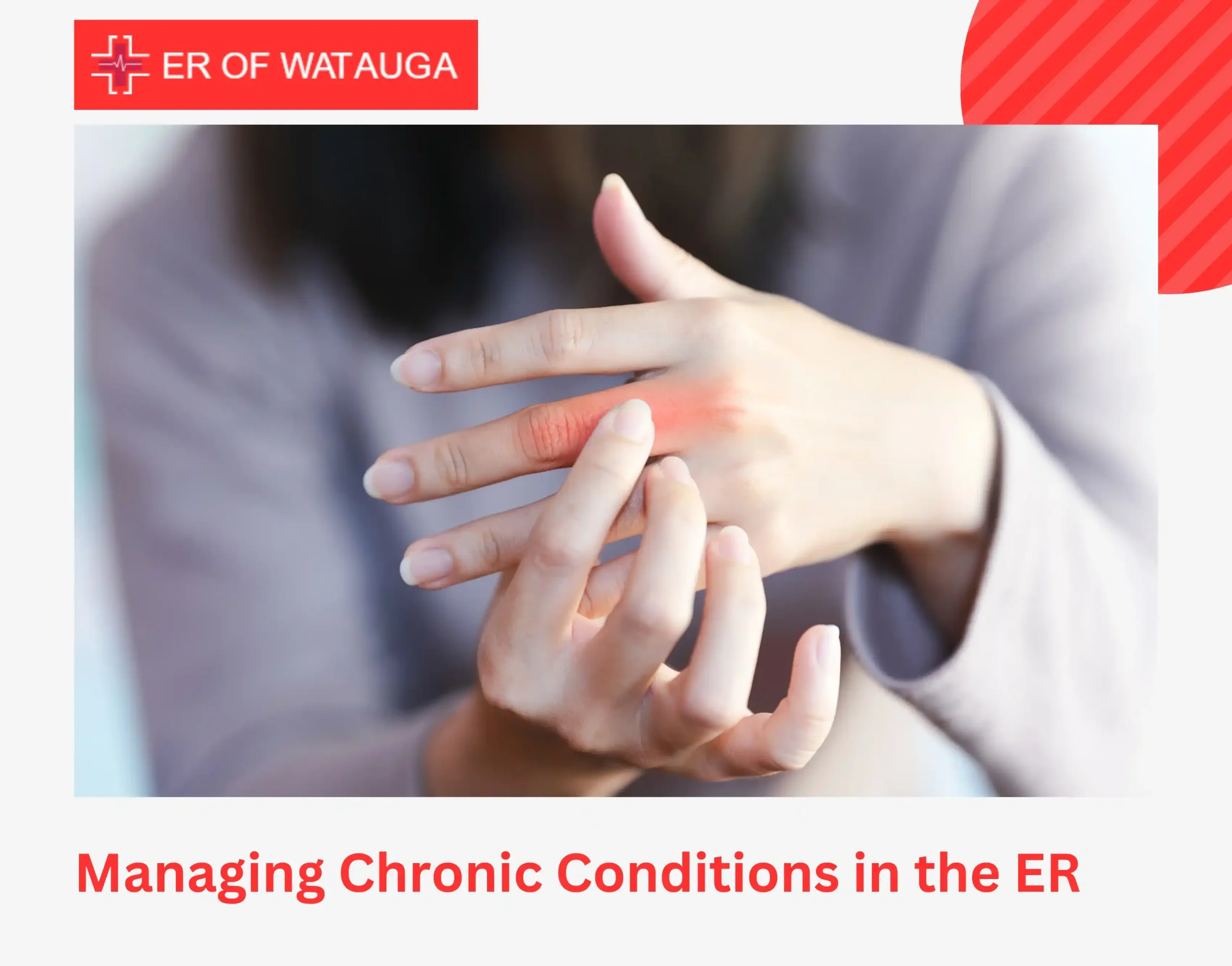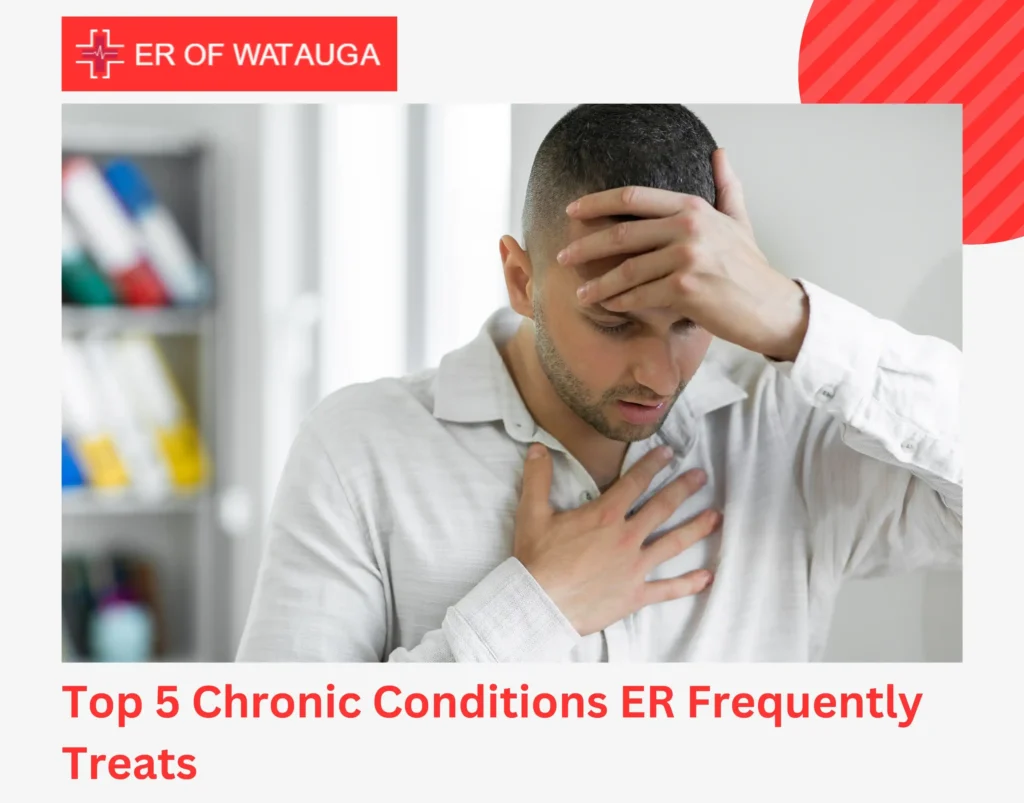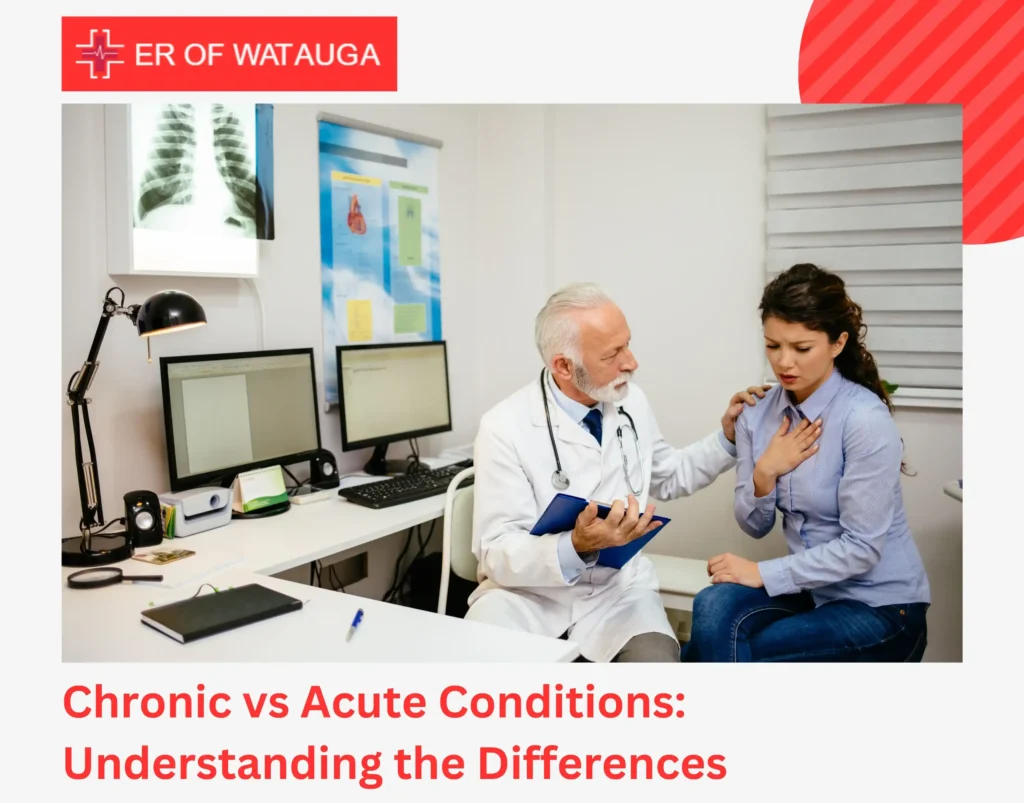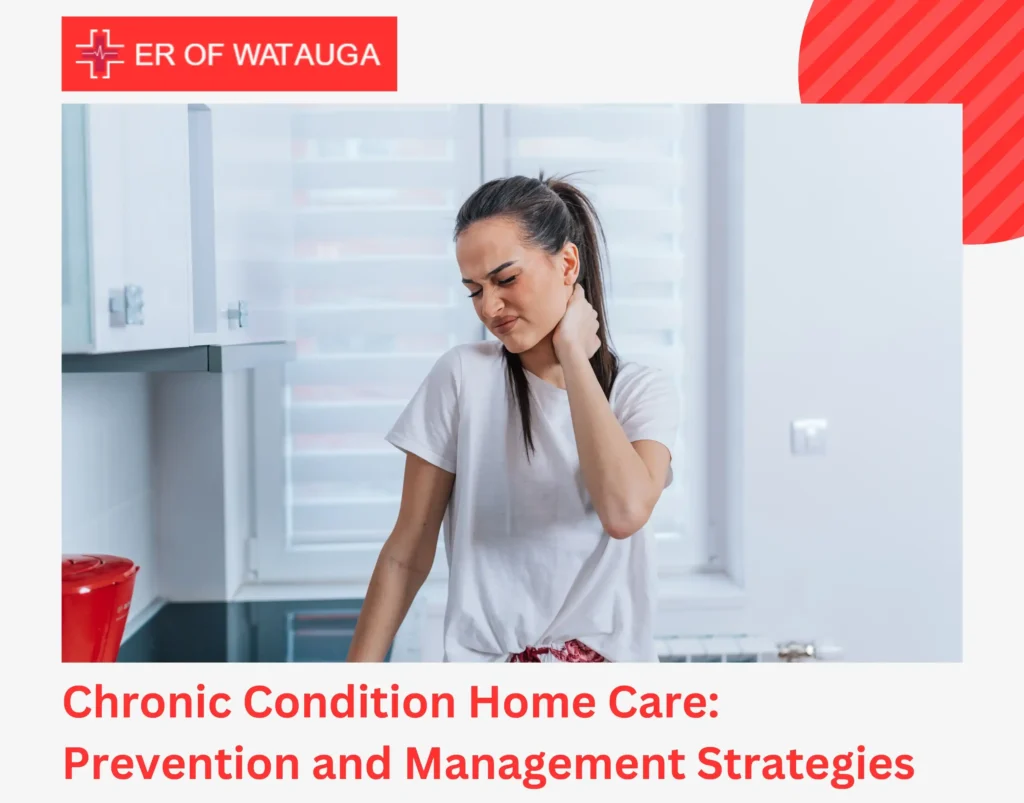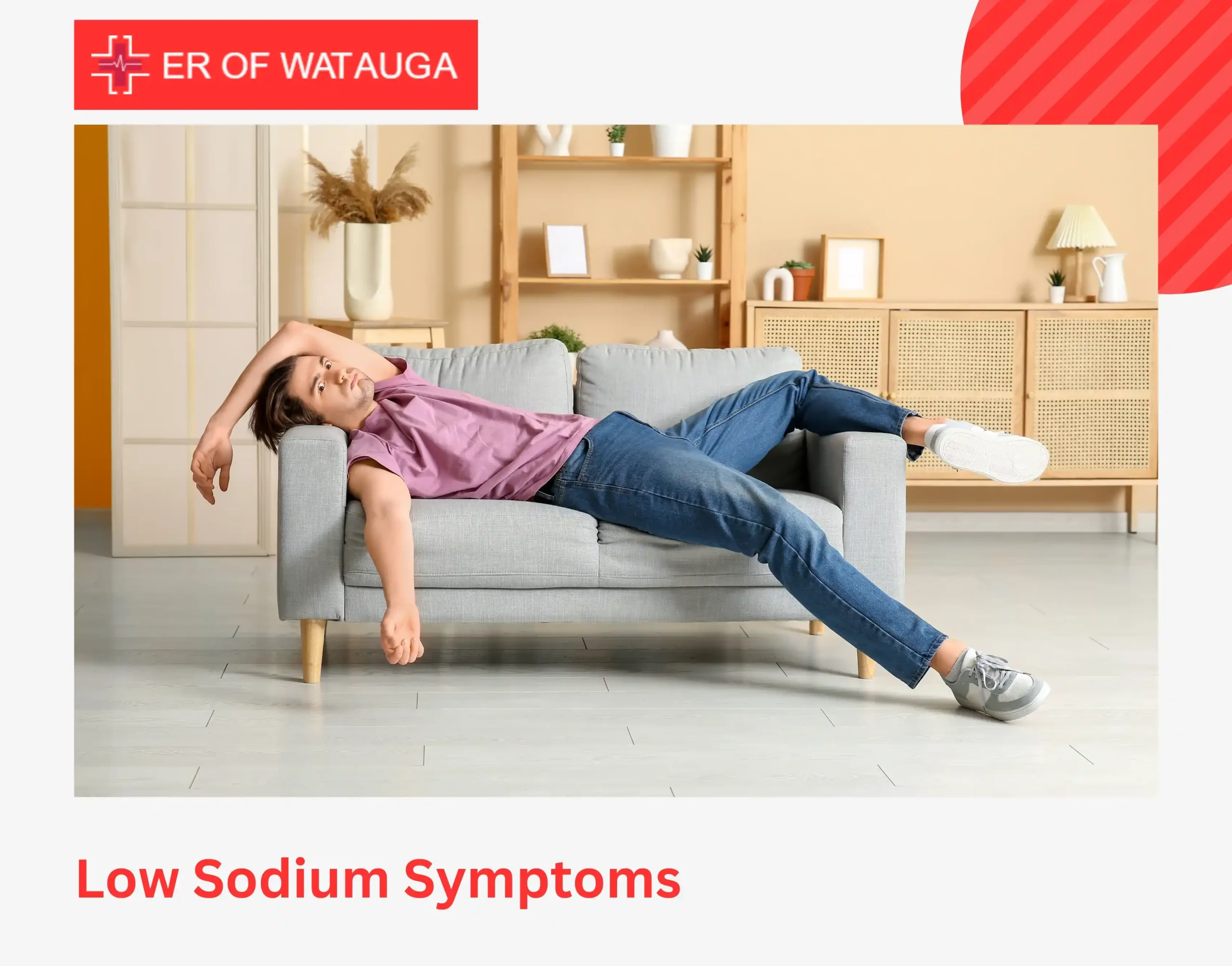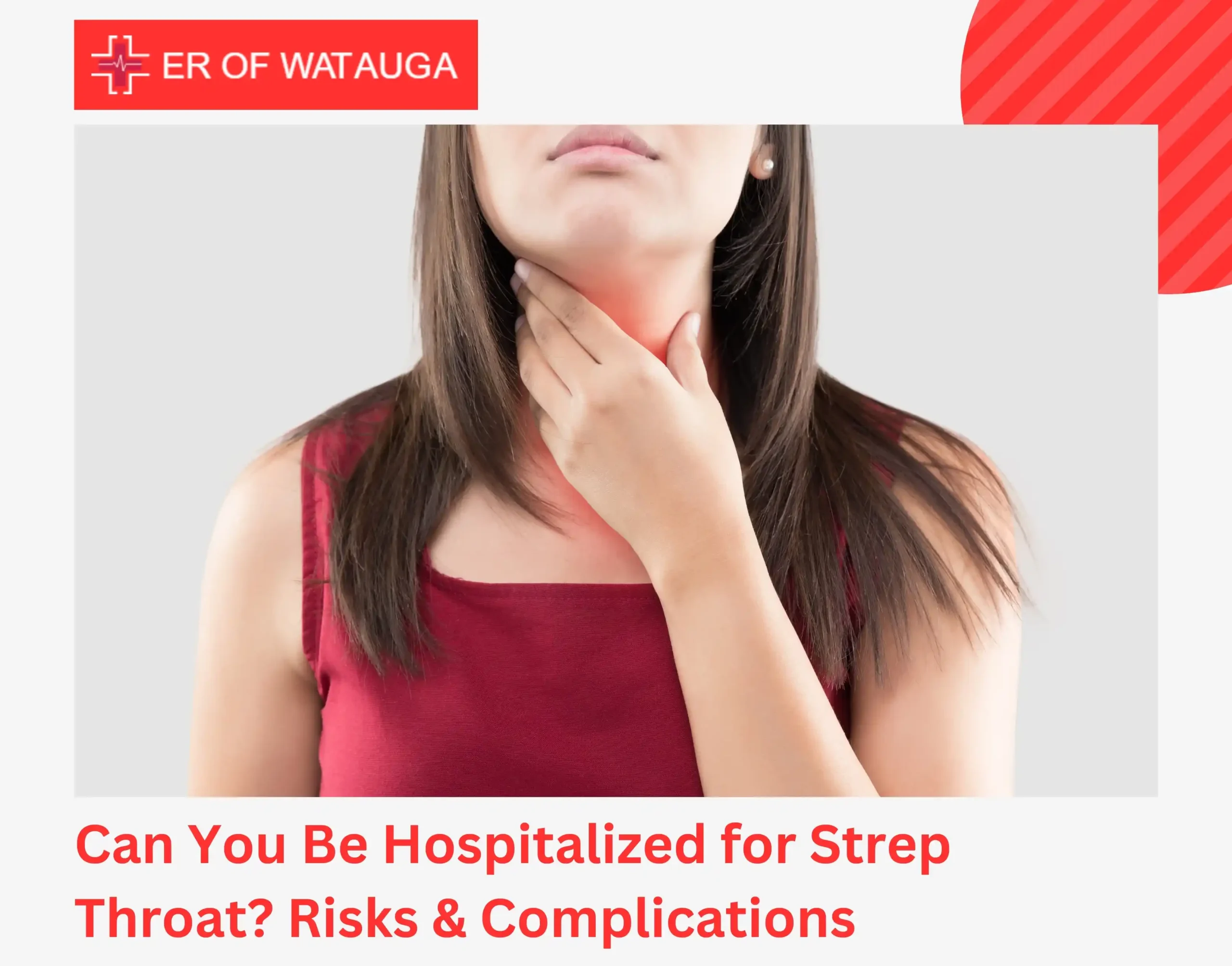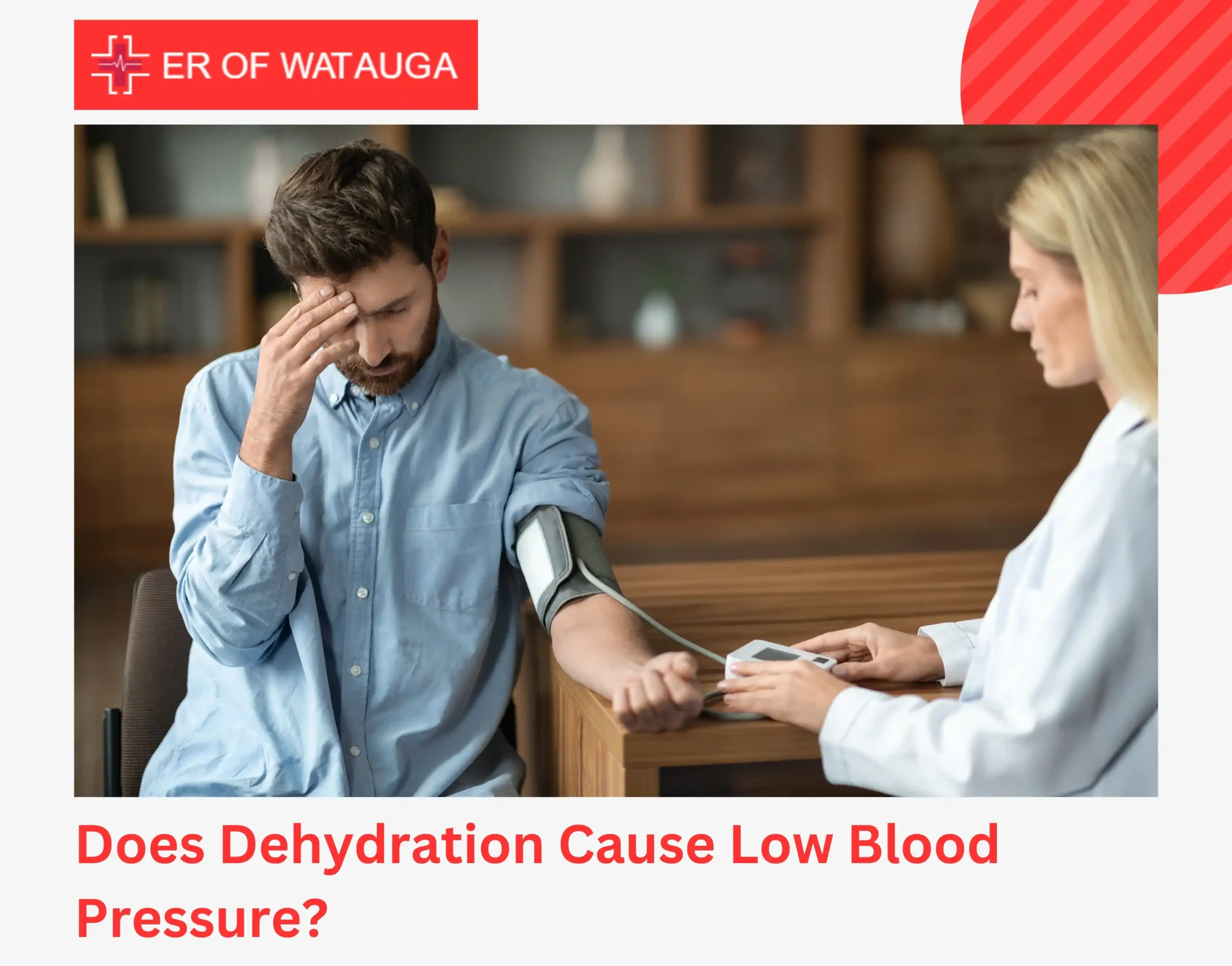Nearly 60% of ER visits involve patients with at least one chronic condition¹, yet many struggle to distinguish between routine symptoms and true emergencies. While chronic conditions like diabetes and hypertension typically require scheduled care from specialists, certain warning signs demand immediate emergency attention.
Knowing when chronic conditions in the ER become life-threatening isn’t always straightforward. Let’s uncover common chronic conditions treated in emergency rooms, specific warning signs that indicate danger, and essential information that could save critical minutes during your next unexpected visit.
Top 5 Chronic Conditions ER Frequently Treats
Emergency departments regularly treat acute complications from chronic diseases. This chronic conditions list represents the most frequent reasons people with long-term health issues seek urgent care.
1. Hypertension
Hypertension silently affects millions, but certain situations transform this manageable condition into a medical emergency. Blood pressure readings above 180/120 mmHg constitute a hypertensive crisis requiring immediate medical attention.
Warning signs that your high blood pressure requires emergency care include:
- Severe headache that develops suddenly
- Blurred vision or other visual disturbances
- Chest pain
- Difficulty breathing or shortness of breath
- Numbness or weakness in the face, arm, or leg (especially on one side)
- Confusion or difficulty speaking
How the ER Manages Hypertensive Emergencies
ER physicians will perform rapid assessment with cardiac monitoring, administer medications to lower blood pressure safely, and conduct lab tests to check for organ damage. This immediate intervention prevents stroke, heart attack, and kidney damage while stabilizing your condition for follow-up care.
2. Diabetes Emergencies
Diabetes complications account for millions of ER visits annually, with both hyperglycemia (high blood sugar) and hypoglycemia (low blood sugar) presenting life-threatening scenarios.
Diabetic ketoacidosis (DKA) occurs when extremely high blood sugar leads to dangerous acid buildup. Signs include:
- Extreme thirst and frequent urination
- Abdominal pain and vomiting
- Fruity-smelling breath
- Confusion or difficulty staying awake
- Rapid, deep breathing
Severe hypoglycemia (blood sugar below 55 mg/dL) requires urgent attention when accompanied by confusion or unusual behavior, seizures, loss of consciousness, and inability to swallow or take glucose tablets.
How the ER Manages Diabetic Emergencies
In the emergency room, physicians rapidly assess blood glucose levels, administer appropriate medications as needed, provide IV fluids, and monitor electrolyte balance to prevent long-term organ damage.
3. Depression and Anxiety
Mental health emergencies represent a growing percentage of ER visits, particularly when chronic depression or anxiety escalates to crisis levels. Emergency intervention becomes necessary when:
- Suicidal thoughts or behaviors emerge
- Severe panic attacks cause physical symptoms mimicking heart attack
- Psychosis develops (hallucinations or delusions)
- Medication side effects become severe
- Self-harm occurs
How the ER Manages Depression & Anxiety
ER physicians provide immediate pain relief, stabilization, and coordinate transfer to appropriate mental health facilities for specialized treatment when necessary.
4. Heart Disease
Chronic heart disease creates vulnerability to multiple emergency scenarios beyond heart attack. Patients with underlying cardiac conditions should seek immediate ER care for:
- New or worsening chest pain unrelieved by rest or medication
- Irregular heartbeat (arrhythmia) causing dizziness or weakness
- Sudden shortness of breath or difficulty breathing while lying flat
- Fainting or near-fainting episodes
- Swelling in legs and ankles with breathing difficulty
How the ER Manages Heart Disease
Our emergency room can perform EKGs, cardiac enzyme testing, and other diagnostics to determine whether symptoms indicate a heart attack, heart failure exacerbation, arrhythmia, or another cardiac emergency. Treatment focuses on stabilizing the immediate threat while preparing for potential transfer to cardiac specialty care when surgical intervention is needed.
5. Substance Use Disorders
Substance use disorders represent chronic conditions through either overdose or withdrawal. Emergency intervention becomes critical for:
- Slowed or stopped breathing
- Blue lips or fingernails (Cyanosis)
- Unresponsiveness or unconsciousness
- Severe tremors or seizures
- Chest pain or irregular heartbeat
- Extreme agitation or confusion
- Dangerously elevated heart rate or blood pressure
- Dehydration from vomiting and diarrhea
How the ER Handles Substance Use Disorders
ER treatment for substance-related emergencies includes respiratory support, medication to reverse overdose effects, IV fluids, and monitoring for complications. For severe withdrawal, physicians provide medications to manage dangerous symptoms and stabilize patients before connecting them with appropriate addiction treatment resources.
Chronic vs Acute Conditions: Understanding the Differences
Acute vs chronic conditions assessment is one of the first decisions made during emergency care. This distinction between acute and chronic conditions is crucial because it fundamentally shapes your treatment in the ER.
Acute conditions typically:
- Develop suddenly and unexpectedly
- Last for a relatively short time (days to weeks)
- Often have an identifiable cause or trigger
- Usually respond well to targeted treatment
- Resolve completely with proper intervention
Chronic conditions, by contrast:
- Develop gradually over months or years
- Persist for extended periods (3+ months)
- May have complex or multiple causes
- Require ongoing management rather than “cures”
- Often fluctuate between stable periods and flare-ups
When Chronic Symptoms Become Acute Emergencies
The most dangerous scenarios occur when stable chronic conditions suddenly destabilize. These acute-on-chronic episodes require immediate emergency intervention. A person with well-controlled diabetes might suddenly develop ketoacidosis, requiring rapid medical response.
Patients with stable COPD can progress to respiratory failure within hours when an infection triggers inflammation. Even carefully controlled hypertension can spike to stroke-risk levels during periods of stress or medication changes.
Emergency physicians use specific strategies to differentiate between your “normal” chronic symptoms and true emergencies:
- Baseline comparisons: “How does this pain compare to your usual symptoms?”
- Timeline analysis: “When did these symptoms become different from your usual experience?”
- Treatment response: “Have you tried your regular medications? Did they help?”
- Vital sign changes: Measuring significant deviations from your typical readings
- Laboratory markers: Testing for elevated inflammatory or distress indicators
When visiting the ER for chronic conditions, bring documentation of your baseline symptoms, medication list, and previous similar episodes. This knowledge significantly improves diagnostic accuracy and treatment decisions during those critical first moments of emergency care.
Dietary Approaches for Chronic Conditions
What you eat directly affects how your body manages chronic health issues. The right dietary approaches for chronic conditions can significantly reduce emergency room visits by helping maintain stable blood sugar, blood pressure, and inflammation levels. While diet alone cannot replace medication or medical care, proper nutrition can help prevent acute flare-ups.
Nutrition Plans That Help Stabilize Common Chronic Conditions
Different chronic conditions respond to specific nutritional strategies:
For diabetes management:
- Mediterranean diet and DASH eating patterns show remarkable benefits
- Emphasis on vegetables, fruits, whole grains, lean proteins, and healthy fats
- Regular meal timing helps prevent dangerous blood sugar fluctuations
Heart disease and hypertension:
- Sodium restriction, potassium-rich foods, and omega-3 fatty acids
- Reducing saturated fat intake while increasing fiber
- The DASH diet can reduce blood pressure comparable to some medications
Inflammatory conditions:
Anti-inflammatory foods like fatty fish, colorful vegetables, olive oil, nuts, and berries help reduce symptom severity. Eliminating trigger foods through careful elimination diets can identify specific dietary irritants that worsen symptoms.
Mental health conditions:
Foods rich in omega-3s, B vitamins, zinc, magnesium, and antioxidants support brain function and may help stabilize mood disorders when used alongside appropriate medical treatment.
Chronic Condition Home Care: Prevention and Management Strategies
Effective chronic condition home care prevents unnecessary emergency visits while maintaining quality of life. Create a structured self-management plan to recognize patterns, identify early warning signs, and respond appropriately before situations become critical.
Essential home monitoring tools:
- Blood pressure cuff for hypertension and heart conditions
- Glucose meter for diabetes
- Pulse oximeter for respiratory conditions
- Symptom diary to record changes and patterns
Daily management practices:
- Medication organization
- Environmental modifications to prevent falls and injuries
- Regular sleep schedule
- Stress reduction techniques like meditation or yoga
- Activity tracking to maintain appropriate exercise levels
How to help chronic conditions stay stable involves creating communication plans with care providers, setting up medication delivery services, and establishing emergency contact protocols with family members.
When to Seek ER Chronic Care
Understanding when your symptoms demand visiting the emergency room is the most critical aspect of chronic condition management. Seek chronic conditions ER care when:
- Breathing becomes difficult or labored
- Chest pain or pressure lasts more than a few minutes
- Sudden, severe pain unlike your typical symptoms
- Infection signs appear with high fever or breathing trouble
- Severe medications side effects appear
- Mental confusion or inability to speak clearly develops
- Loss of consciousness or seizures occur
- Home readings show dangerous levels (BP, blood sugar, etc.)
A proactive approach to chronic conditions allows you to act confidently during stressful situations.
Managing Chronic Conditions in the ER
Living with long-term health issues teaches patience, but certain moments demand instant action. Knowing when your chronic conditions need emergency room care prevents both unnecessary fear and dangerous delays.
Your health isn’t just about managing symptoms; it’s about recognizing when those symptoms shift into emergency territory that requires emergency attention.
FAQs:
What are the most common chronic conditions seen in emergency rooms?
Hypertension, diabetes, heart disease, mental health conditions, and substance use disorders account for the majority of ER visits. These conditions often require emergency intervention when complications develop rapidly.
How do ER doctors determine if my symptoms are related to my chronic condition?
Emergency physicians compare current symptoms against your baseline status, review recent medication changes, order diagnostic tests, and assess whether symptoms match known complications of your condition.
Should I follow my regular diet for my chronic condition before an ER visit?
Maintain your usual diet unless specifically instructed otherwise by paramedics. However, inform ER staff about recent meal timing, especially for diabetes or medication interactions.
Is high blood pressure a chronic condition that requires emergency care?
Yes, hypertension is a chronic condition. It requires emergency room care when readings exceed 180/120 mmHg, especially with symptoms like severe headache, vision changes, or chest pain.
Is fever an acute or chronic condition?
Fever is typically an acute condition, developing suddenly and resolving within days. It signals infection or inflammation and usually requires medical attention only when severe or prolonged.
